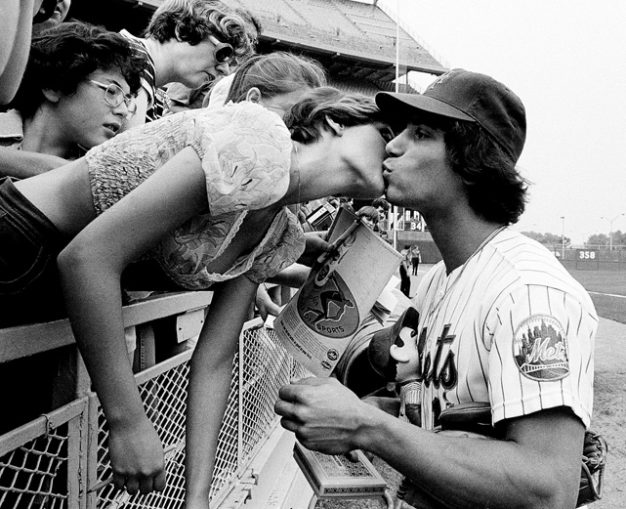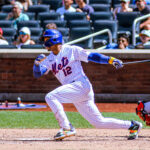While Mets’ fans wait to see if Ike Davis or Daniel Murphy will be traded and what they might bring back, here’s a look at a trade that was unpopular with many fans at the time, but turned out to be a great move for the Mets in every way possible.
 During the dismal years of the late 1970’s, Lee Mazzilli was the Mets’ centerpiece player. A first-round draft pick out of Brooklyn, and incidentally, one of the Mets‘ very best first round picks, especially when you consider the players drafted ahead of him*.
During the dismal years of the late 1970’s, Lee Mazzilli was the Mets’ centerpiece player. A first-round draft pick out of Brooklyn, and incidentally, one of the Mets‘ very best first round picks, especially when you consider the players drafted ahead of him*.
Mazzilli quickly rose through the farm system, displaying an exceptional ability to get on base, steal bases, play centerfield, and also hit with consistency and power from both sides of the plate.
Once Mazz reached the big club, he quickly became a fan favorite. He had the look and swagger and put up some nice numbers on otherwise terrible teams. His one glaring weakness was his arm. Ironically, Lee was ambidextrous and his left arm was considered stronger, but once he signed with the Mets, he was instructed to throw righthanded only.
Whether Mazzilli was a legitimate all-star major league centerfielder, he was certainly the best one the Mets had, at least until Mookie Wilson came along. Once Wilson came up, Mazz moved over to left and also played some at first base.
Then, in February of 1982, GM Frank Cashen made what we all thought was a great move for the Mets, acquiring slugging left fielder George Foster from the Reds for a package of spare parts. With Wilson in center and Dave Kingman at first, Mazzilli was destined for a utility role, something that didn’t sit well with him, especially since his mentor, Joe Torre had been replaced as manager by George Bamberger.
In the spring of 1982, Cashen sent Mazzilli to the Texas Rangers for two minor league pitchers, a return that Mazzilli himself saw as an insult and many of his fans agreed.

Ron Darling was the Rangers’ #1 draft pick the previous year, a talented pitcher out of Yale who started out in Double-A where his numbers were just fair and his control disappointing. Walt Terrell was considered a fringe prospect at best, a low-round draft pick who put up decent minor league numbers.
Although the Mets didn’t reap any immediate results and had another awful season in 1982 as Foster proved to be a major disappointment, by the following year, Terrell was in the Mets’ rotation with Darling joining him in 1984. Darling went on to put up excellent numbers as a quality starter for seven years and Terrell, after a couple of solid, if unspectacular years with the Mets was traded even-up to Detroit for Howard Johnson, who became the Mets’ top home run hitter and a solid contributor for almost a decade. Terrell, meanwhile was a workhorse for Detroit, so that trade helped both teams.
To top it off, after drifting from Texas to the Yankees to Pittsburgh, Mazzilli returned to the Mets for the 1986 stretch run, replacing the released George Foster, and was part of the World Championship team serving mostly as an effective pinch-hitter. So, this was undeniably, a trade that worked out about as well as possible. We can only hope Sandy Alderson can come up with something similar before the 2014 season.
* Mazzilli was the #14 pick. Between #4 pick Dave Winfield and Mazzilli, the other players selected were Glen Tufts, Johnnie Lemaster, Billy Taylor, Gary Roenicke, Lew Olsen, Pat Rockett, Ed Bane, Joe Edelen, and Doug Heinold.. The only player selected in the first round after Mazzilli to have any kind of career in the big leagues was catcher Steve Swisher.














